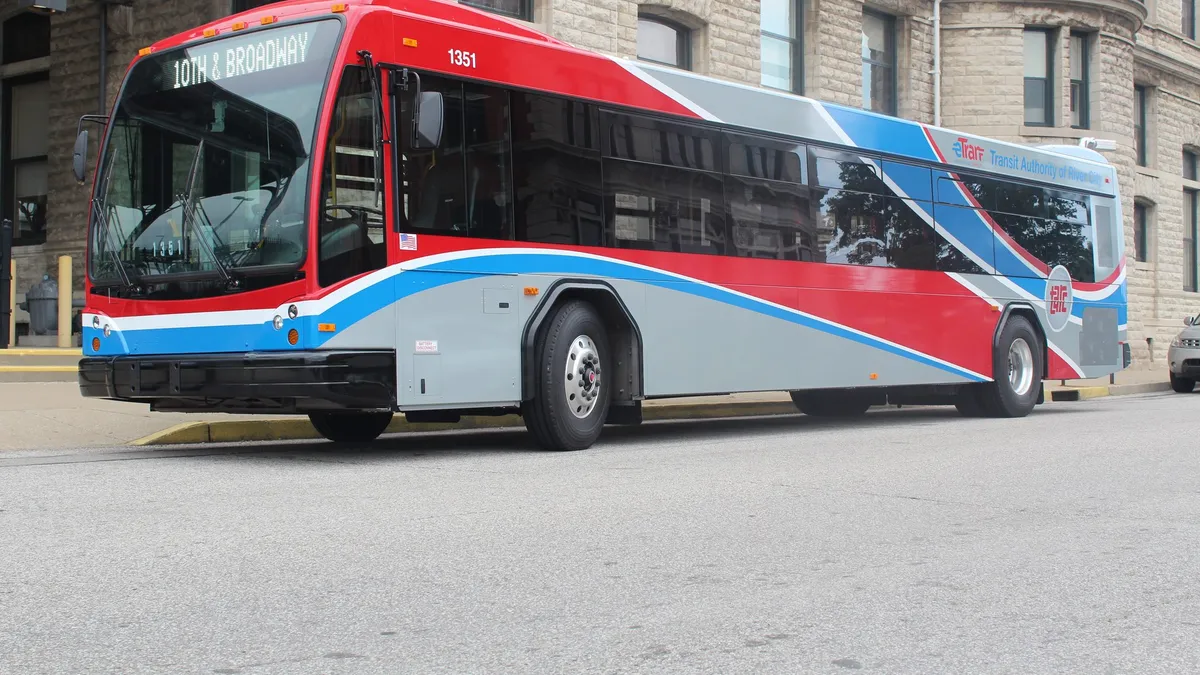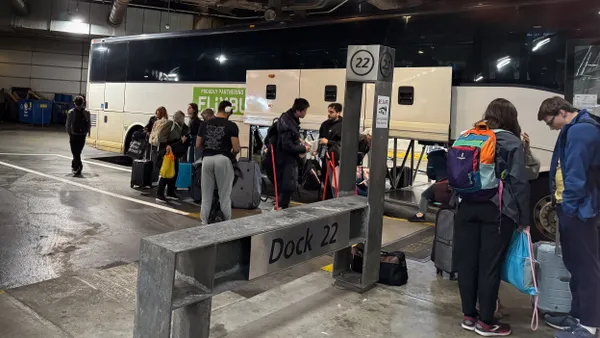Dive Brief:
- Louisville, KY's Transit Authority of River City (TARC) has launched what it calls a "first-of-its-kind" Mobility as a Service (MaaS) platform that includes a multimodal trip planning app and a Dynamic Trip Planner on its website.
- Users can plan trips across multiple modes of transportation including local transit, bike-share, Bird scooters and ride-hailing services Uber and Lyft. The platform will also provide real-time data and analytics on system usage, trip origins and terminations, mode of travel and rider cost savings from app usage.
- Later this year the app is expected to integrate features including real-time parking information and a payment solution so riders can pay for their entire multimodal trip through the TARC app.
Dive Insight:
Cities and transit agencies across the U.S. haven't yet delved deeply into launching dedicated MaaS platforms.
In March, St. Louis' transit agency replaced its app with the well-known Transit app, which allows users to plan and pay for multimodal trips. Transit works in more than 175 cities across the world, including Baltimore, Boston and Tampa, FL. Multimodal app integration also is becoming popular among ride-share companies, as seen in Uber and Lyft's addition of Denver's transit information into their apps.
Apps represent convenience. The average smartphone user launches at least nine apps per day and 30 apps monthly, and the number is growing. Yet the glut of options has led to customers experiencing app fatigue. As an analysis of Washington, DC's scooter pilot suggests, users are less likely to download and use multiple competitors' apps for the same service, such as Bird, Lime and Uber apps for e-scooters.
Integrating multiple modes of transportation into one platform can ease app fatigue by making it easier for users to see options in one place.
Multimodal transportation — when executed well — is a way to boost safety on public transit, especially for women. Enhancing ways to seamlessly transfer from one mode of transportation to another reduces the danger associated with a person idling alone in public after ending a transit ride and trying to figure out the next leg of a trip.












